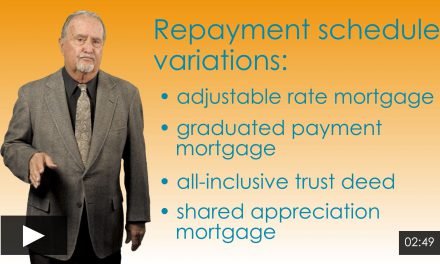This is the fourth episode in our new video series dramatizing encroachments and boundary disputes.
The prior video covered the three-year statute of limitations which runs from the commencement of an encroachment when an owner seeks to terminate it or recover money losses.
Drawing the line
The existence of an encroachment is easily determined. All that is needed is a survey to locate the property line. When an improvement on one parcel extends over the line onto an adjacent parcel, it is an encroachment.
Occasionally, neighboring owners disputing the existence of an encroachment rely on contradictory surveys to establish the property line. When the owners are not able to agree on the location of the property line, the boundary dispute needs to be resolved before any remedy for the encroachment — when one exists — may be granted.
The resolution of the boundary dispute frequently amounts to no more than a court determining which of the surveys is more accurate. [Iacovitti v. Fardin (1954) 127 CA2d 348]
However, where the boundary is marked by a physical structure, such as a fence or a row of trees, a survey is not always to be relied on.
For instance, a common boundary line marked by a fence or other structure is not located on the recorded description of the lot line. Both neighbors treat the fence as the boundary for a number of years. The agreed-to location of the property line due to creating the fence is the boundary, regardless of deeds and surveys to the contrary.
Once an encroachment has been determined, the remedies available to the owner include:
- an injunction ordering the removal of the encroaching structure; and
- money losses for the diminished value of the property.
Balancing the hardships
An owner is entitled to terminate or prevent an unauthorized intrusion onto their real estate.
However, when a building or other substantial improvement encroaches on an owner’s property, the neighbor’s cost of removing the encroachment might far exceed the damage inflicted on the owner burdened by the encroachment.
Thus, the encroachment is allowed to continue and the owner is awarded money losses for the lost use of their property, called balancing hardships or balancing equities.
The conditions for balancing hardships — i.e., merely granting money losses and allowing an encroachment to continue — are:
- the owner of the property affected by the encroachment may not suffer an irreparable injury due to the continued existence of the encroachment;
- the neighbor who owns the encroaching structure needs to have acted innocently and in good faith when constructing the encroaching structure; and
- the cost to the neighbor to remove the encroachment needs to greatly exceed the damage done to the value of the property on which it encroaches. [Christensen Tucker (1952) 114 CA2d 554]
For instance, the foundation to a neighbor’s residence is located close to the property line. The eaves of the house and a bay window hang out over the line. The encroaching portions of the structure can be removed without great expense or loss of value.
The owner demands the removal of the encroaching structures.
The neighbor claims removal is not appropriate since the encroachment is minimal.
However, since the encroachment is minimal and the cost of removing it is small, the encroaching portion of the residence needs to be removed — tipping the balance in favor of eliminating the encroachment. [Harland v. Noto (1951) 105 CA2d 740]
Further, an encroachment need not be removed when removal adversely affects a large segment of the public.
For example, a reservoir constructed by a water company encroaches on an owner’s property. The owner seeks to remove the encroachment. However, the encroaching reservoir may remain partly because the reservoir supplies water to over 500 homes. [Ukhtomski v. Tioga Mutual Water Co. (1936) 12 CA2d 726]
Good faith and innocence
A neighbor who constructs improvements which encroach on the land of another needs to do so innocently and without knowledge of negative effects to someone else, called acting in good faith, before any balancing of the hardship of removal or remaining may take place.
The good faith requirement prevents an intentional exploitation of the balancing hardships rule.
For example, an unimproved parcel of real estate is subject to setback requirements. The owner begins building a residence on the property.
Soon after construction commences, the owner’s neighbor notices the residence is being constructed within the setback — too close to the property line. The owner is informed the location of their improvements violate setback requirements. The neighbor also threatens legal action unless the owner complies with the setback requirements.
However, the owner does not cease work on the residence. They complete the construction knowing the improvements violate the setback requirements. The neighbor seeks to enforce the setback requirements by forcing the removal of the structure from within the setback.
The cost to the owner of removing the residence far exceeds the damage to the neighbor.
However, the owner built the residence with full knowledge of both the setback violation and the neighbor’s objection. Thus, the owner did not complete the construction in good faith and the portion of the structure within the setback is to be removed. [Morgan v. Veach (1943) 59 CA2d 682]














